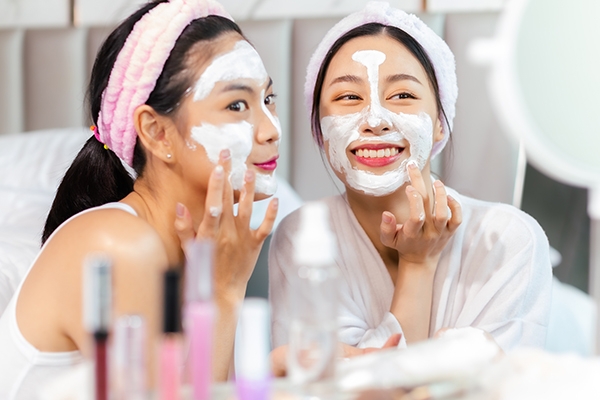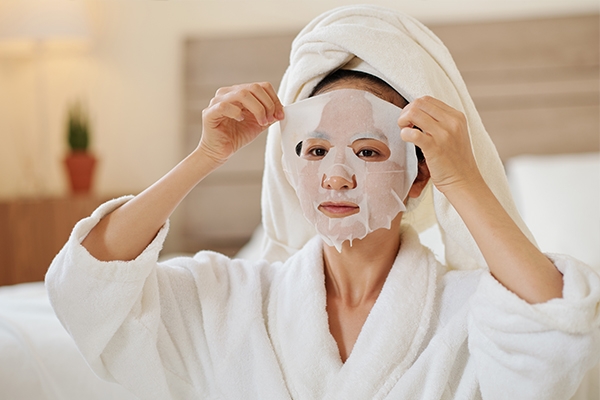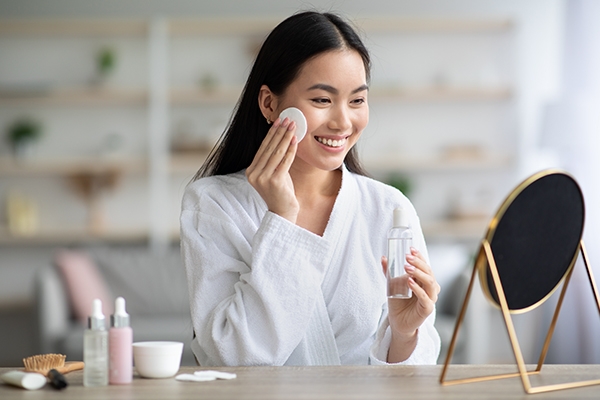Which Facial Mask is for My Skin Type?

A facial mask is one type of skincare that must be applied to achieve clean, moist, and nourished facial skin. Which mask is best for you? Focus on your specific skin care needs.
Women in various countries have used facial masks and felt their benefits since ancient times. For example, women in India have used ubtans (facial masks) for 5,000 years. The facial mask is made from various herbal plants, roots, and flowers.
Ancient Egyptian women used Dead Sea clay or mud as masks. Even in China, Yang Guifei from the Tang Dynasty is said to have created a facial mask made from pearl powder, jade, lotus root, and ginger.
A face mask can be an option to get healthy skin instantly because it is easy to apply and use and has many benefits. It only takes 15-20 minutes. The skin will feel tight and clean.
Depending on your skin type, you can use it once or thrice a week. Normal to oily facial skin can be applied more often than dry skin.
Does everyone need to use a mask? Yes. Both men and women can get significant benefits from using a mask. Just like other skincare products, masks help overcome facial skin problems.
For example, masks made from salicylic acid are good for acne-prone facial skin—vitamin C to reduce wrinkles. Retinoids remove dark spots.
Various benefits of masks can be obtained if used regularly:
- hydrates and moisturizes the skin;
- removes excess oil on the face;
- improves the appearance of pores;
- cleans blackheads;
- reduces signs of aging.
The facial skin care series has five types of facial masks.

1. Cream mask
This mask is rich in oil and moisturizer content to penetrate deep into the skin. Hyaluronic acid is a common chemical used to hydrate the skin.
2. Sheet mask
This mask is simple to apply and remove. It moisturizes the skin and usually contains antioxidants. Refrigerate the mask before use to experience its cooling and calming effect.
3. Exfoliating mask
It provides more intense cleansing than traditional clay masks. It is formulated to remove dead skin cells and cleanse pores for brighter skin. Excessive usage may irritate the skin.
4. Clay mask
Made from clay, sulfur, or mud, it provides the best benefits for skin that needs additional moisture. This mask quickly absorbs excess oil and dirt. However, you must be prepared to be more diligent in cleaning it because the mask residue often sticks to the skin.
5. Gel mask
It’s used to soothe and cool the skin. It’s evident in color and often contains collagen or antioxidants to help the skin recover.
Match your skin type
The next step in choosing the perfect face mask is to find the best ingredients for your skin type. Look for products that contain hypoallergenic ingredients and are fragrance-free, dye-free, and paraben-free. Then, decide on your skincare goals and choose products that suit your skin type.
Dry skin. If your skin is dry, look for a mask with hyaluronic acid. This ingredient helps to hydrate and rejuvenate it.
Aging skin. Are you starting to see fine lines, wrinkles, or hyperpigmentation from the sun? If so, try a vitamin C mask to boost collagen and protect against sun damage. Masks with vitamin C as an active ingredient help achieve a youthful glow.
Acne-prone skin. Want to combat acne and blemishes? Choose a mask with salicylic acid. This content can soothe irritation and reduce the formation of new acne.
Redness. A niacinamide mask can be an effective way to calm rosacea or redness. Studies show that niacinamide can help reduce redness, spots, fine wrinkles, and hyperpigmentation.
Dark spots or pigmentation. Kojic acid's anti-inflammatory and antioxidant help reduce dark spots and hyperpigmentation.
How do I use it?

Step 1: Cleanse your face
Cleanse your face with a cleanser to remove all dirt, oil, and makeup. Before applying the mask, apply a small amount of eye gel or cream around your eyes. This will protect the sensitive eye area.
Step 2: Use clean hands
Apply the mask directly to your cleansed face. It will look like you are wearing a mask when you apply it. Do not rub it. Avoid the eye area and nostrils. Apply the mask from face to neck.
Step 3: Leave it on and wait
You can use these 10-20 minutes to relax and do whatever you want. Be mindful of the time and follow the instructions on the label for when to remove it. The product's benefits are linked to the instructions for use. Be sure to follow the instructions to get the most benefit.
Step 4: Time to remove the mask
The mask is designed to adhere to your skin. Don’t be too rough when removing it. Use plenty of water and a washcloth to remove the mask gently. Don’t rub your skin with a towel.
Tip: After the face mask has dried and it’s time to remove it, apply a warm, wet washcloth on your face for a few seconds. Repeat a few times to help loosen and dissolve the face mask from your skin. This advice will make the rinsing process easier and gentler for your skin.
^^
Before adding any new product to your skincare routine, always do a patch test to ensure your skin doesn’t react badly to the new mask.
If you want to care for your skin, visit GWS Medika Springhill Clinic, a facial clinic in Jakarta Utara. GWS Medika Springhill provides high-quality skin care from certified doctors and professionals.
GWS Medika Springhill Clinic provides a variety of treatments, from basic to premium facials, tailored to your skin needs. We provide safe and effective care using current technology and BPOM-registered products.



